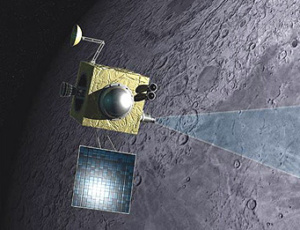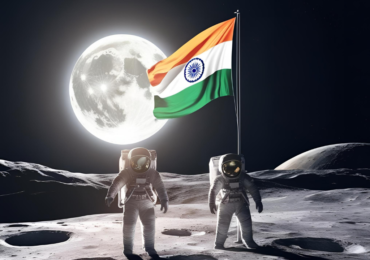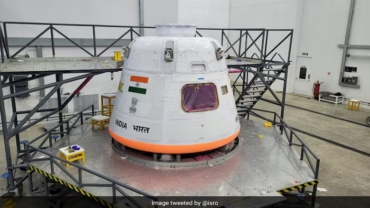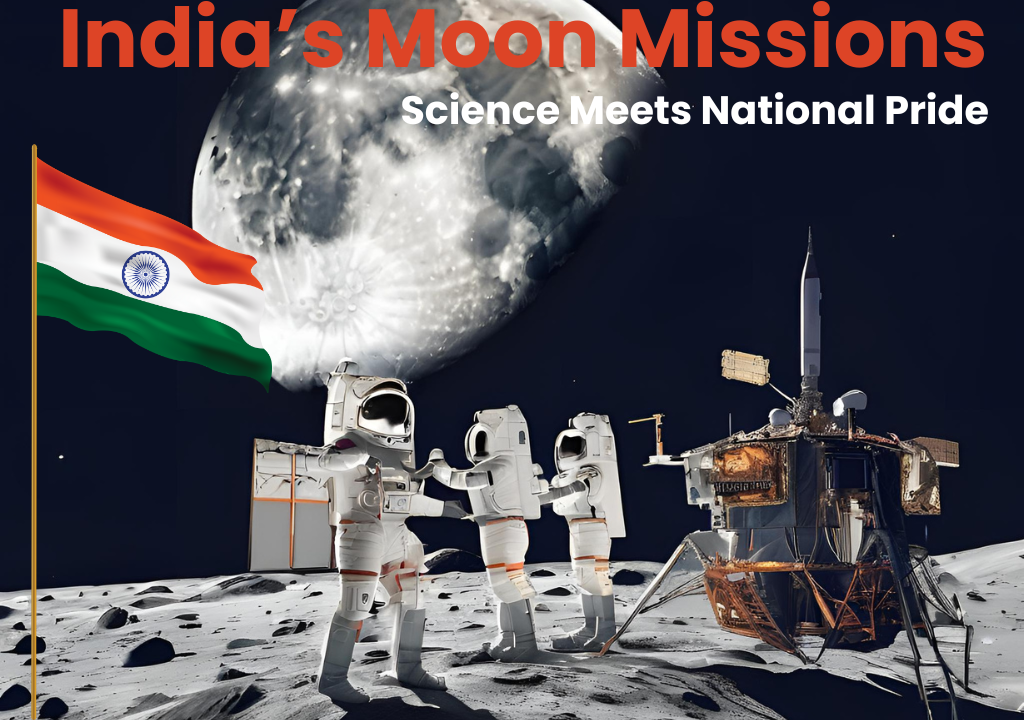Introduction
India’s Moon Missions have emerged as a powerful symbol of scientific excellence and national pride. From the pioneering Chandrayaan-1 mission in 2008 to the historic Chandrayaan-3 soft landing in 2023, the Indian Space Research Organisation (ISRO) has demonstrated remarkable growth in space science and exploration. These missions not only reflect India’s technological capabilities but also underscore the country’s ambition to be a global space leader. What began as a modest venture has transformed into a source of inspiration for millions, uniting the nation and igniting a collective sense of achievement and aspiration.
What Is India’s Moon Missions All About?
India’s Moon Missions are part of ISRO’s broader goal to explore space scientifically while keeping costs remarkably low. These missions are aimed at:
- Studying the Moon’s Surface: Understanding the mineral composition and terrain to uncover the Moon’s secrets.
- Searching for Water: Investigating the presence of water ice, especially near the Moon’s south pole, which is critical for future colonization and space travel.
- Testing Indigenous Technology: From launch vehicles to rovers and landers, India is building advanced space hardware at a fraction of global costs.
- Establishing Space Diplomacy: These missions enhance India’s image globally, opening doors for space collaborations and policy influence.
ISRO’s philosophy is simple — maximum outcome with minimum cost, and the Moon missions exemplify that.
Links Suggested: Digital India and Cyber Security: Balancing Innovation and Protection
India’s Moon Missions : Chandrayaan-1 A New Beginning
Launched on October 22, 2008, Chandrayaan-1 marked India’s first step beyond Earth’s orbit. The mission placed India among an elite group of nations capable of interplanetary exploration.
Key Contributions:
- Discovered water molecules on the lunar surface — a groundbreaking revelation that changed global lunar science.
- Had 11 scientific instruments onboard, including contributions from NASA and ESA — a demonstration of trust in India’s capabilities.
- Successfully mapped the Moon’s surface in high resolution, providing a basis for future exploration missions.
Though designed for two years, it operated for 312 days before contact was lost — a respectable achievement for a first-time mission.

India’s Moon Missions : Chandrayaan-2 Ambition and Lessons
Launched in July 2019, Chandrayaan-2 represented a quantum leap. Unlike its predecessor, it had three parts: Orbiter, Vikram Lander, and Pragyan Rover.
Mission Goals:
- Attempt a soft landing near the lunar south pole — an area never reached by any country before.
- Deploy a rover to study the Moon’s surface directly.
- Expand India’s deep space communication and control systems.
What Happened:
- The orbiter was placed successfully and continues to send data even today.
- The Vikram lander lost communication just minutes before landing due to a last-minute software glitch.
Despite the partial failure, the mission was a major learning experience. It enhanced ISRO’s knowledge of:
- Terrain navigation and landing dynamics
- Thermal resistance in deep space
- Autonomous control systems
It also generated massive emotional resonance, as the world saw ISRO scientists break down in front of cameras — highlighting their dedication and humanizing the scientific endeavor.

Links Suggested: India-Bangladesh Relations: Why India Withdrew the Trans-Shipment Facility
India’s Moon Missions : Chandrayaan-3 Historic Soft Landing on the Moon
On August 23, 2023, India achieved what no other country had — a successful soft landing near the lunar south pole. This area is of strategic importance due to its permanently shadowed regions, where water ice is believed to exist.
Mission Architecture:
- No orbiter this time — Chandrayaan-2’s orbiter was repurposed.
- Vikram Lander (upgraded) and Pragyan Rover were the two main components.
Scientific Success:
- Rover detected sulphur, oxygen, iron, and other minerals on the lunar surface.
- Measured lunar soil temperature variations, aiding future habitat design.
- Successfully moved and operated for 14 Earth days — the span of one lunar day.
At just ₹615 crore (~$75 million), Chandrayaan-3 was cheaper than many Hollywood sci-fi movies. It redefined cost-efficiency in space missions.

Why Are These Moon Missions So Important?
India’s Moon Missions are significant far beyond their scientific value. Here’s why:
1. Technological Mastery
These missions show India’s self-reliance in:
- Satellite design
- Launch vehicle innovation (like PSLV and GSLV)
- Deep space communication This builds local industry, creates jobs, and enhances India’s defense capabilities too.
2. Scientific Advancement
- ISRO’s data has contributed to over 200+ international research papers.
- Mapping of the Moon helps in understanding Earth’s early history (both were formed around the same time).
3. Global Standing
- India is now viewed as a dependable space partner.
- It can negotiate stronger roles in global projects like the Artemis Accords or even the Lunar Gateway.
4. National Identity and Unity
- Space success ignites emotional unity — from rural students to urban scientists, the Moon mission stories resonate across classes.
- PM Modi’s active engagement during the Chandrayaan-3 landing made it a national moment, shown live in schools and public spaces.

Links Suggested: India-China Trade War: Can India Adopt Trump’s Economic Playbook?
The Global Response and Recognition on India’s Moon Missions
International Applause:
- NASA praised India’s scientific collaboration and offered future partnership opportunities.
- European Space Agency (ESA) termed it a “technical marvel” and showed interest in shared lunar exploration.
- Global media emphasized India’s low-cost, high-impact model, contrasting it with billion-dollar missions from other countries.
Soft Power and Diplomacy:
- ISRO has signed deals with several nations for launch services.
- India now helps countries in Africa, Southeast Asia, and South America with satellite services — a new kind of soft diplomacy.
What’s Next for India’s Lunar Dreams?
1. LUPEX Mission with Japan (Lunar Polar Exploration)
- Jointly developed lander and rover to explore water ice at the Moon’s south pole.
- Could include drilling technologies and long-term experiments.
2. Gaganyaan: Human Spaceflight Program
- India aims to send its first astronauts to space in low-Earth orbit, preparing for future Moon or Mars missions.
- Includes building life-support systems, re-entry modules, and astronaut training facilities.

3. ISRO’s Long-Term Lunar Vision
- Participating in Lunar Gateway (NASA-led)
- Possibly constructing a lunar base or research outpost
- Launching Chandrayaan-4 or sample return missions
India’s lunar strategy is no longer one-off — it’s evolving into a sustained program aligned with global ambitions.
Links Suggested: India-China Trade War: Can India Adopt Trump’s Economic Playbook?
Conclusion
India’s Moon Missions represent the confluence of science, aspiration, and national identity. From the groundbreaking discovery of water in Chandrayaan-1 to the emotional journey of Chandrayaan-2 and the triumphant landing of Chandrayaan-3, ISRO has consistently proven that with vision, grit, and innovation, India can reach for the stars — and land on them.
These missions have not just advanced science but also unified the nation in moments of pride. The Moon is no longer just a distant dream — it’s a place where the Indian footprint now resides.

